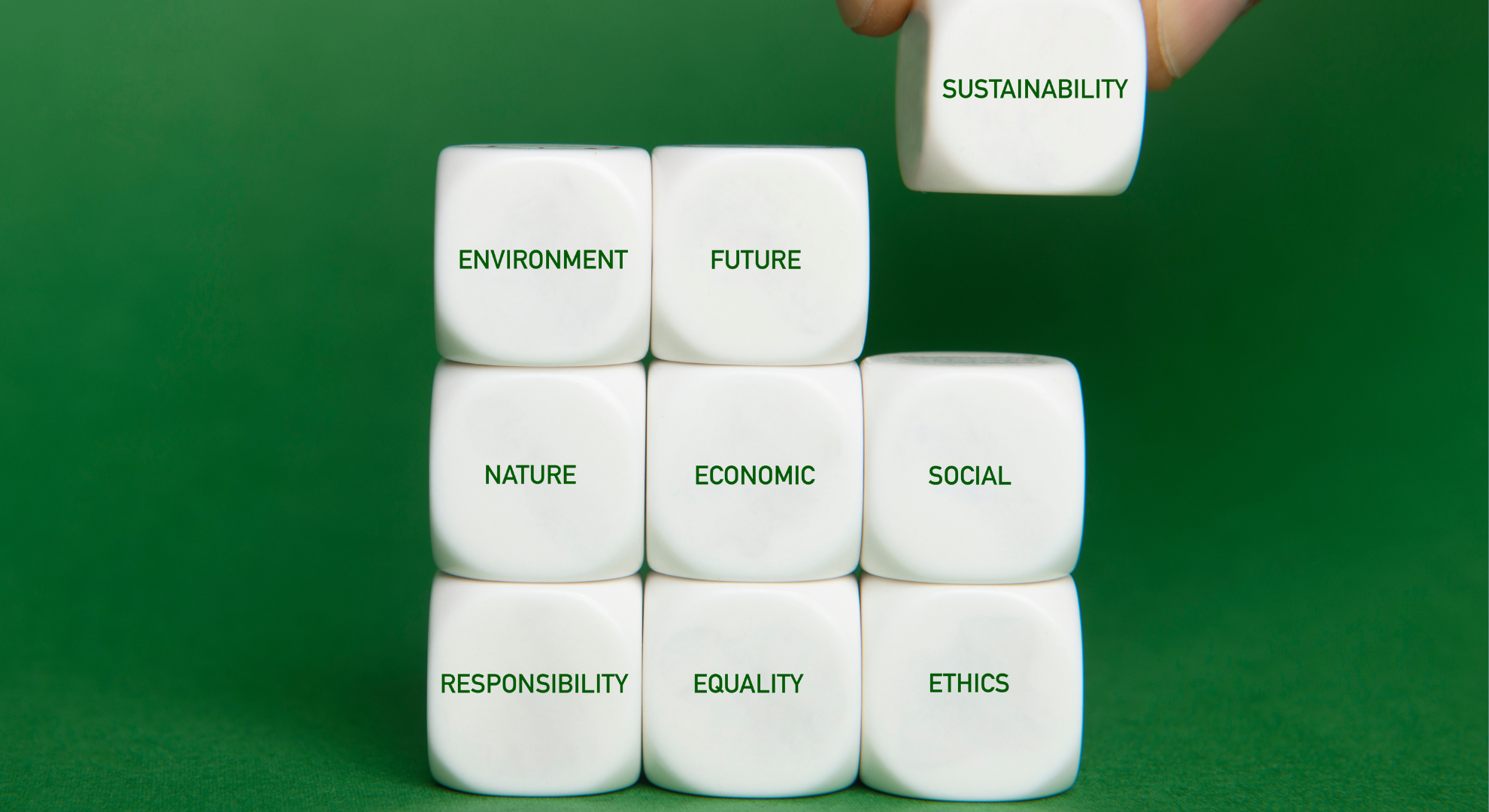Measuring the impact of a company on social and environmental issues is a complex and important task, notably as it goes beyond mere reporting metrics.
Impact measurement covers different areas, such as avoiding harm or benefiting stakeholders, or contributing to solutions for social and environmental issues.
Impact measurement is essential to assess the achievement of sustainable goals, however, many still do not fully understand how to measure their impact or how to effectively manage it.
What does Impact mean?
In a business environment, there is a lot of ambiguity and confusion about what ‘impact’ is, how it should be defined, how to measure it, and what kind of measurement is sufficient.
Despite heightened attention paid to, expectations around, and use of the term impact, the concept does not have a shared definition of what it constitutes.
Impact has been defined by various international organizations.
The most commonly used definition of Impact being the one of the Impact Management Project which uses the same definition as the OECD: positive and negative, primary and secondary long-term effects produced by an intervention, directly or indirectly, intended or unintended.
As for Global Reporting Initiative: ‘impact’ refers to the effect an organization has on the economy, the environment, and/or society, which in turn can indicate its contribution (positive or negative) to sustainable development.
The term ‘impact’ can refer to positive, negative, actual, potential, direct, indirect, short-term, long-term, intended, or unintended impacts.
Principles and concepts
Objectives behind the concept of impact
Impact is a concept that is applied both prospectively and retrospectively to actions, programs, activities, and operations.
It aims to help organizations, profit and non-profit to:
- predict impacts at an early stage in project strategy, planning, and design
- decide whether or not to proceed with a planned course of actions
- decide whether to stop, continue, scale up or adapt an ongoing activity
- find ways and means to reduce adverse impacts and increase positive impacts
- shape projects to suit the local environment and take into account local communities
- present forecasting and options to decision-makers
Types of impact
Depending on their motivation on managing impact, organizations’ intentions range from broad commitments to more detailed objectives.
These intentions relate to one of three types of impact:
- At a minimum, organizations can act to avoid harm to their stakeholders. For example, decreasing their carbon footprint or paying an appropriate wage.
- In addition to acting to avoid harm, organizations can actively benefit stakeholders. For example, proactively upskilling their employees, or selling products that support good health or educational outcomes.
- Many organizations can go further — they can use their capabilities to contribute to solutions to pressing social or environmental issues. For example, enabling the underserved populations to achieve good health, or hiring and upskilling formerly unemployed individuals.

Source: Impact management project
Categories of impact
Impacts are related to environmental and social issues.
Organizations’ impacts will seat within one or both of those 2 categories:
1/ Environmental impact
When organizations’ decisions and day-to-day operations affect and influence:
- people’s environment: the quality of the air and water people use, the availability and quality of the food they eat, the level of hazard or risk, dust, and the noise they are exposed to, the adequacy of sanitation, their physical safety, their access to and control over resources…
- the natural earth system: disruption of the rain cycle, increase in land temperature, destruction of ecosystems, fauna, and flora, acidification of the oceans…
2/ Social impact
Social impact regroups all issues that affect people, directly or indirectly.
A convenient way of conceptualizing social impacts is to look at whether there are effects on one or more of the following:
- People’s way of life: how they live, work, play, and interact with one another on a day-to-day basis Their culture, their shared beliefs, customs, values, and language or dialect
- Their community: its cohesion, stability, character, services, and facilities
- Their political systems: the extent to which people can participate in decisions that affect their lives, the level of democracy in place
- Their health and wellbeing: health is a state of complete physical, mental, social, and spiritual wellbeing and not merely the absence of disease or infirmity
- Their personal and property rights, particularly whether people are economically affected or experience personal disadvantage which may include a violation of their civil liberties
- Their fears and aspirations: their perceptions about their safety, their fears about the future of their community, and their aspirations for their future and the future of their children
Organizations can conduct an Environmental Impact Assessment and/or a Social Impact Assessment, that includes the processes of analyzing, monitoring, and managing the intended and unintended environmental and/or social consequences, both positive and negative, of planned interventions (policies, programs, plans, projects).
Example of methodology to assess Environmental Impact: Carbon footprint at a company level, LCA at a product/service level, expert analysis…
Example of methodology to assess Social Impact: Surveys for all potentially affected people, case studies, expert analysis…
Impact in the investment industry
Today, more and more investors are talking about “impact”.
They are 3 types of investments that take sustainability and impact into account:
Environmental, social, and corporate governance (ESG)
It focuses on companies making an active effort to either limit their negative societal impact or deliver benefits to society (or both).
The 3 criteria, E, S, and G, constitute the three pillars of a company’s extra-financial analysis. Investors use the ESG approach to evaluate investees on expected practices (existing policies and actions on dedicated topics) and metrics (whether the company reports on certain KPIs).
ESG also provides a framework to assess the exposure of a company to sustainability ESG risks (through the lens of financial or double materiality).
Companies that meet ESG criteria do not necessarily demonstrate reduced negative impacts nor positive impacts.
For example, a company can have a climate policy in place and monitor its GHG emissions (as part of its ESG strategy) but still have a significant negative impact on climate change.
Examples of ESG investment: investing in a tech company that owns data centers using renewable energy, investing in a petrochemical company that has an ambitious climate policy.
Socially responsible investing (SRI)
It entails screening investments to exclude businesses that conflict with the investor’s values or that focus on businesses that prove to have the best environmental and social practices.
SRI can take different forms, including: ESG screening (invest in companies with the best ESG ratings), exclusion (excluding from the portfolio companies that do not respect international conventions or that operate in controversial sectors), and thematic approach (promoting investments in companies operating in the field of sustainable development).
SRI dates back to John Wesley, the founder of the Methodist movement in the 18th century, who urged his followers to avoid investing in “sin stocks” that generated profits from alcohol, tobacco, weapons, or gambling activities.
SRI goes further than ESG. Not only is SRI an investment that takes into account ESG criteria, but it is also part of a broader sustainable finance policy. All SRI-labeled funds usually meet ESG criteria. However, a fund that meets ESG criteria is not necessarily part of an SRI approach.
Examples of SRI investment: investing in companies operating in education, water, recycling, renewable energy, etc., divesting from fossil fuel and firearms industries.
Impact investing
It is a relatively recent practice, first mentioned in 2007 by the Rockefeller Foundation. It is characterized by a direct connection between values-based priorities and the use of investors’ capital. Impact investing meets a dual objective: to generate a substantial financial return and to create and quantify a positive societal impact.
Examples of impact investment: investing in an organization that contributes to building schools in underdeveloped countries, investing in a company whose core products help reduce GHG emissions (e.g. plant-based food), etc.
Impact investing mostly refers to private funds, while SRI and ESG investing involve publicly traded assets.
According to US SIF (The Forum for Sustainable and Responsible Investment), socially responsible investing (SRI), environment, social and corporate governance (ESG) investing, and impact investing assets grew from $3 trillion in 2010 to $12 trillion in 2018 to $17.1 trillion in early 2020.
Focus on the comparison between ESG and Impact Investing strategy
There is room for both ESG and impact investment strategies in the market, and investors may want to allocate funds to each in different proportions.
Both can deliver superior financial performance and make the world a better place, but they work in different ways, and there are some overlaps between the two strategies.
IFC provides a useful framework to understand the nuances between ESG and Impact Investing and compare actions taken at each stage of the typical investment process in the light of these differences:

Points of attention in the concept of Impact
Because the definition of impact is very broad and vast, it is almost impossible to propose a single, universal scope of application of the concept of impact.
There is currently no robust and recognized methodology for measuring net impact (positive externalities adjusted for negative externalities).
As a result, different perspectives and dimensions will affect how impact will be framed and measured by companies.
This leads to 2 points of attention when looking at Impact assessments:
- Organizations should be very attentive not to only focus on positive impacts and make sure to measure all negative externalities that can be generated and thus further mitigated. Impact data should be reliable, material, and account for both positive and negative impacts. Whichever tool and methodology organizations choose to employ, they should be transparent about the sources and the process used.
- It is not always relevant to compare different companies’ impacts. If done, the comparison must be carefully made, comparing data coming from the same tools and making sure the scope and methodologies are comparable (carbon footprint scope 1, 2, and/or 3 or LCA for example).
Reconciliation between ESG and Impact concepts
Created in 2016, the Impact Management Project (IMP) is the reference organization on impact measurement.
It provides a forum for building global consensus on measuring, assessing, and reporting impacts on people and the natural environment.
IMP is part of the organization that will advise the newly created International Sustainability Standards Board (ISSB).
ISSB was launched in November 2021 by IFRS to develop a comprehensive global baseline of high-quality sustainability disclosure standards.
ISSB aims at meeting investors’ information needs and supporting companies in providing transparent, reliable, and comparable reporting on climate and other environmental, social, and governance (ESG) metrics.
The integration of IMP into ISSB’s work is good news for organizations working towards impact but it might also blur even further the lines between ESG and Impact.
Related articles
Global Reporting Initiative: What It Is and How to Do It
GRI stands for Global Reporting Initiative, and is an international independent standards organization that promotes sustainability reporting through the development of global standards for corporate responsibility, including environmental, social and governance (ESG) reporting...
Impact – What is Impact
The Corporate Sustainability Reporting Directive (CSRD) requires large businesses and SMEs to produce annual reports on their environmental and social impacts.
CSRD – What is CSRD
The Corporate Sustainability Reporting Directive (CSRD) requires large businesses and SMEs to produce annual reports on their environmental and social impacts.
Corporate Sustainability Reporting Directive: All you need to know
The Corporate Sustainability Reporting Directive is an EU regulation that will have a huge impact on how organisations report their environmental, social and governance (ESG) performance...
Sustainability – What is Sustainability
The GRI is an international independent standards organization and currently issues one of the most well-known standards for ESG reporting (GRI Standards).
Discover the latest Sustainability Recent Developments to improve your companies
Sustainability is a concept that evolves due to pressing sustainability challenges, worldwide issues, and its own concept limits. New concepts have emerged to think further and respond better to all the world’s current challenges...
GRI – What is the Global Reporting Initiative
The GRI is an international independent standards organization and currently issues one of the most well-known standards for ESG reporting (GRI Standards).
What is Materiality and Why it matters in business
Materiality is crucial for sustainability reporting because it allows companies to focus on the most important aspects of their sustainability efforts. A company can choose to report on all aspects of its sustainability program, but this would be extremely time-consuming and would probably not be very useful for investors and other stakeholders...
Materiality – What is Materiality
ESG is an acronym for Environmental, Social, and (Corporate) Governance. It refers to the non-financial factors of a corporation’s impact.
EcoVadis – What is EcoVadis rating
Created in 2007, EcoVadis provides a collaborative web-based rating platform for assessing the sustainability performance of organizations worldwide.
Impact-washing – What is Impact-washing
Impact washing can be defined as any marketing claim about a product/good/service/funds triggering a change in the real economy that cannot be supported by evidence.
ISO 26000 – What is ISO 26000
ESG is an acronym for Environmental, Social, and (Corporate) Governance. It refers to the non-financial factors of a corporation’s impact.
B Corp – What is B Corporation certification
ESG is an acronym for Environmental, Social, and (Corporate) Governance. It refers to the non-financial factors of a corporation’s impact.
The most important and recent developments of ESG (Environmental, Social and Governance)
Being a B Corporation is not just about making profits and creating wealth for a company, it is a way of creating a more sustainable future for society! Discover our article about B corps and its benefits here...
The process for an enterprise to get the B corp certification
Becoming a B Corporation is an ambitious undertaking. This article will guide you through the steps required to become a B Corporation…
CSR – What is Corporate Social Responsibility
CSR is centered on the idea that businesses have a responsibility to benefit the society that they exist within—a broader view than the one that says businesses’ only responsibility is to produce economic profit.
What is a B Corporation: what this means and its benefits for companies
Being a B Corporation is not just about making profits and creating wealth for a company, it is a way of creating a more sustainable future for society! Discover our article about B corps and its benefits here...
The guide to EcoVadis certification: frequently asked questions
This guide will take you through the steps of the EcoVadis Certification process, and explain what is involved in becoming a certified business...
The implications of ISO 26000 for companies
ISO 26000 is a standard providing direction for the application of social responsibility to the activities of an organization. But what does this mean? And how can organizations use it to create better and more sustainable business practices? Let's talk about it…
What is the meaning of CSR (Corporate social responsibility) and how to adopt it?
A Corporate Social Responsibility strategy refers to an organization's active consideration of the effects its activities have on the environment, employees, customers, and suppliers. Let's look at how your company could adopt such a program...
ESG – What is Environmental, Social and Governance
ESG is an acronym for Environmental, Social, and (Corporate) Governance. It refers to the non-financial factors of a corporation’s impact.
4 reasons companies should adopt CSR, Corporate social responsibility
CSR is all about managing a company’s externalities while creating sustainable value for stakeholders and continuous innovation for the business. Let's break that down and explore why...
Carbon disclosure project reporting: what is it and how does it work?
Read our article about The Carbon Disclosure Project (CDP), an extra-financial questionnaire that collects data on companies’ environmental practices and performance...
What are the differences between Corporate Social Responsibility (CSR) and Environmental Social Governance (ESG)?
These terms are both used to describe an approach for businesses to integrate social and environmental factors into their governance policies, strategies, processes, and programs. Yet, they're not the same. Let's explore their key differences...
Why is ESG (Environmental, Social and Governance) important for a business
ESG (environmental, social and governance) can help businesses make sound decisions, and investors achieve better long-term returns. Let's discover how...













